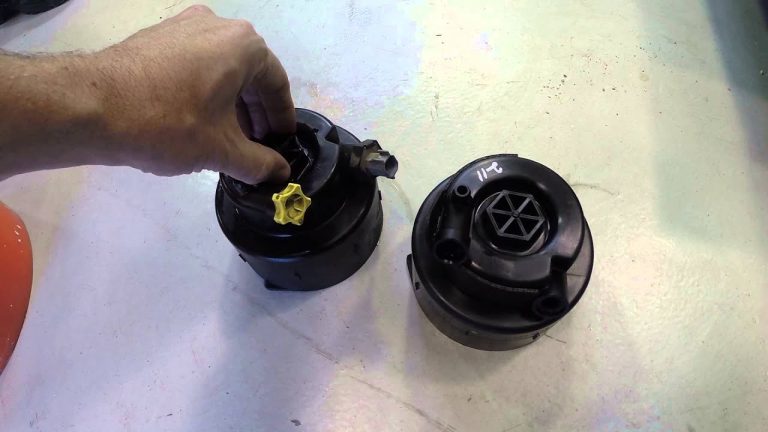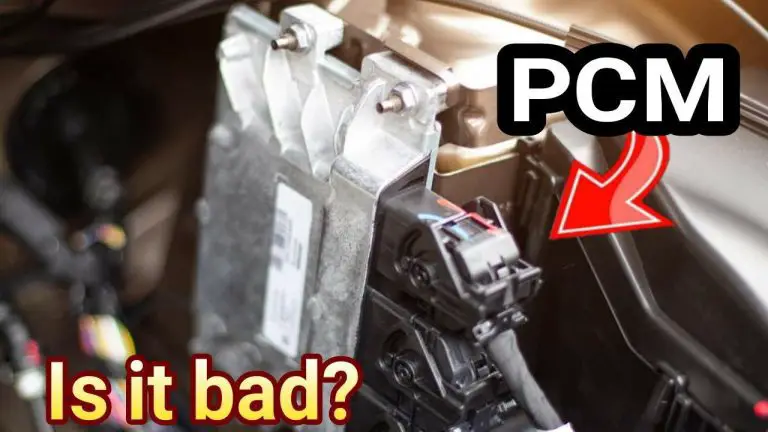Symptoms To Detect Bad Glow Plug Relay On 7.3L Powerstroke (Explained 2023)
If you own a diesel vehicle equipped with a 7.3-liter engine, you likely appreciate its reliability, power, and ability to withstand demanding tasks. However, like any mechanical component, certain parts can experience issues over time. One such critical component in a 7.3-liter engine is the glow plug relay.
The glow plug relay plays a vital role in the engine’s cold-starting process by supplying power to the glow plugs, which help ignite the fuel-air mixture in the cylinders. When this relay malfunctions or fails, it can cause significant problems during cold starts and impact the overall performance of the engine.
In this blog post, we will shed light on the common symptoms of 7.3 glow plug relay failure. By familiarizing yourself with these warning signs, you can quickly identify potential issues, take proactive measures, and ensure your engine starts smoothly even in cold weather conditions.
So, if you’re curious to learn more about the symptoms of 7.3 glow plug relay failure and how to detect them, let’s delve into this important topic and empower you with the knowledge to keep your diesel engine running optimally.
7.3L Powerstroke Bad Glow Plug Relay Symptoms
When the glow plug relay in a 7.3L Powerstroke engine begins to fail, several symptoms can indicate its deteriorating condition. Recognizing these signs early on is crucial in order to address the issue promptly and ensure smooth engine starts, especially in colder temperatures. Here are some common symptoms of a bad glow plug relay in a 7.3L Powerstroke:
1. Difficult Cold Starts
A failing glow plug relay may cause difficulties during cold starts. The engine may take longer to start or require multiple attempts before it fires up, particularly in colder weather conditions.
2. Extended Glow Plug Cycling
When the glow plug relay is faulty, you may notice that the glow plugs stay energized for an extended period of time during start-up. This prolonged cycling of the glow plugs can lead to excessive heat generation and potential damage to the plugs.
3. Illuminated Glow Plug Indicator Light
The glow plug indicator light on the instrument cluster serves as an indication of the glow plug system’s status. A failing relay can cause the glow plug indicator light to illuminate for an extended period or flash erratically.
4. Decreased Engine Performance
A malfunctioning glow plug relay can impact the overall performance of the engine. You may experience reduced power, sluggish acceleration, or rough idle, especially during cold starts.
5. Increased Smoke on Start-Up
A faulty glow plug relay can result in excessive smoke emission from the exhaust during start-up. This smoke is usually white or gray in color and is caused by incomplete combustion due to inadequate glow plug heat.
What To Do When You Detect A 7.3 Bad Glow Plug Relay?
When you detect a bad glow plug relay in your 7.3L Powerstroke engine, it’s important to take immediate action to address the issue. Here are the steps you should follow:
1. Confirm the Diagnosis
If you suspect a bad glow plug relay, it’s recommended to have a qualified mechanic or a reputable diesel engine specialist diagnose the problem. They will perform a thorough inspection and use diagnostic tools to verify whether the glow plug relay is indeed faulty.
2. Replace the Glow Plug Relay
If the diagnosis confirms a bad glow plug relay, it’s essential to replace it with a new, high-quality relay that meets OEM specifications. Consult with your mechanic or diesel specialist to ensure the correct relay is selected for your specific vehicle.
3. Inspect the Glow Plugs
While addressing the relay issue, it’s wise to inspect the condition of the glow plugs as well. Replace any damaged or worn-out glow plugs as necessary. It’s advisable to replace all the glow plugs at once to maintain consistent performance.
4. Perform a System Check
After replacing the glow plug relay and any necessary glow plugs, it’s recommended to perform a system check. This involves verifying that the new relay is functioning properly and that the glow plugs are receiving the correct voltage during start-up.
5. Regular Maintenance
To prevent future issues with the glow plug relay, ensure regular maintenance of your 7.3L Powerstroke engine. Follow the manufacturer’s recommended maintenance schedule, including replacing glow plugs at the recommended intervals, to keep the system in optimal condition.
Is Replacing A 6.7 Powerstroke CP4 Typically Expensive?
Replacing a 6.7 Powerstroke CP4 (Common Rail Fuel Injection Pump) can be a significant expense due to the complexity and specialized nature of the component. The cost of replacing a CP4 pump can vary depending on factors such as the brand of the pump, whether it is a new or remanufactured unit, and the labor charges associated with the installation.
Generally, the price range for a CP4 pump can be between $800 and $2,000. However, it’s important to note that these figures are estimates and the actual cost may vary based on various factors, including the specific vehicle model, location, and the pricing policies of the repair shop.
In addition to the cost of the pump itself, there may be additional expenses involved in the replacement process, such as fuel system cleaning, replacing fuel filters, and other related parts or services. These costs can vary depending on the condition of the fuel system and any other issues that may be present.
It’s advisable to consult with reputable diesel repair shops or dealerships to get accurate cost estimates based on your specific situation. They can provide you with a detailed breakdown of the expenses involved in replacing the CP4 pump and help you make informed decisions regarding your vehicle’s maintenance and repair needs.
Frequently Asked Questions
Q: What are the symptoms of a failing glow plug relay in a 7.3 engine?
A: The symptoms of a failing glow plug relay in a 7.3 engine can include difficult cold starts, extended glow plug cycling, an illuminated glow plug indicator light, decreased engine performance, and increased smoke on start-up. These signs indicate potential issues with the glow plug relay, which can affect the engine’s ability to start smoothly and perform optimally, especially in colder temperatures.
Q: Why does a failing glow plug relay cause difficult cold starts?
A: The glow plug relay supplies power to the glow plugs, which heat up the combustion chambers for easier cold starting. When the relay fails, it may not provide sufficient power to the glow plugs, resulting in longer crank times and difficulties in starting the engine, particularly in colder weather conditions.
Q: What does extended glow plug cycling mean?
A: Extended glow plug cycling refers to a situation where the glow plugs stay energized for a longer duration than normal during engine start-up. A failing glow plug relay can cause this prolonged cycling, potentially leading to excessive heat generation, increased wear on the glow plugs, and inefficient fuel combustion.
Q: Why does the glow plug indicator light illuminate or flash erratically?
A: The glow plug indicator light on the instrument cluster indicates the status of the glow plug system. A failing glow plug relay can cause the indicator light to illuminate for a longer period or flash erratically, signaling a potential issue with the relay or the glow plugs.
Q: Can a failing glow plug relay affect engine performance?
A: Yes, a failing glow plug relay can impact overall engine performance. Inefficient combustion due to insufficient heat from the glow plugs can result in reduced power, sluggish acceleration, and rough idle, particularly during cold starts.
Q: What causes increased smoke on start-up with a failing glow plug relay?
A: When the glow plugs don’t receive adequate heat from a failing relay, the fuel may not fully combust, leading to increased smoke emission from the exhaust during start-up. This smoke is typically white or gray in color and can indicate incomplete combustion.


